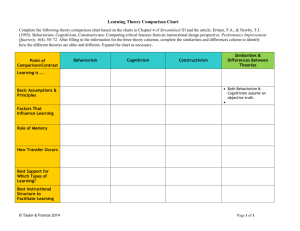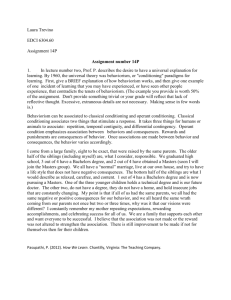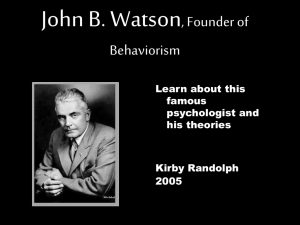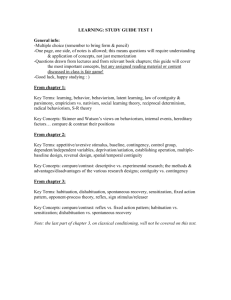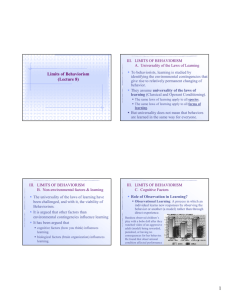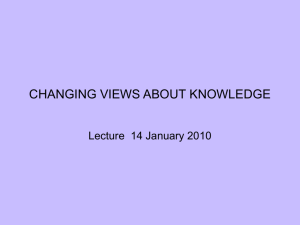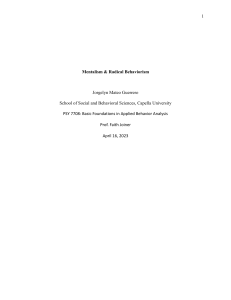0131421131_TB_Ch1 - solutionmanual center
advertisement
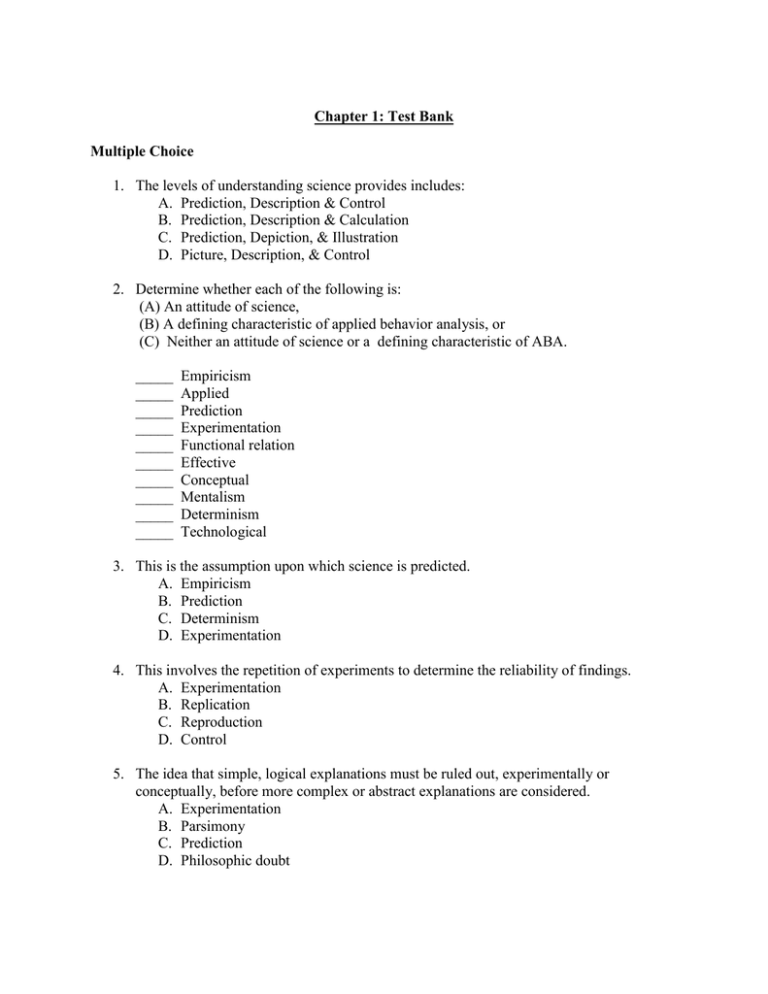
Chapter 1: Test Bank Multiple Choice 1. The levels of understanding science provides includes: A. Prediction, Description & Control B. Prediction, Description & Calculation C. Prediction, Depiction, & Illustration D. Picture, Description, & Control 2. Determine whether each of the following is: (A) An attitude of science, (B) A defining characteristic of applied behavior analysis, or (C) Neither an attitude of science or a defining characteristic of ABA. _____ _____ _____ _____ _____ _____ _____ _____ _____ _____ Empiricism Applied Prediction Experimentation Functional relation Effective Conceptual Mentalism Determinism Technological 3. This is the assumption upon which science is predicted. A. Empiricism B. Prediction C. Determinism D. Experimentation 4. This involves the repetition of experiments to determine the reliability of findings. A. Experimentation B. Replication C. Reproduction D. Control 5. The idea that simple, logical explanations must be ruled out, experimentally or conceptually, before more complex or abstract explanations are considered. A. Experimentation B. Parsimony C. Prediction D. Philosophic doubt 6. This branch of behavior analysis concentrates on the philosophy of the science of behavior. A. Applied behavior analysis B. Experimental analysis of behavior C. Determinism D. Behaviorism 7. This branch of behavior analysis concentrates on development of a technology to improve behavior. A. Applied behavior analysis B. Experimental analysis of behavior C. Determinism D. Behaviorism 8. This formally began the experimental branch of behavior analysis. A. Watsonian psychology or S-R psychology B. Pavlov’s study of reflexive behavior C. Skinner’s publication The Behavior of Organims D. Fuller’s study on the application of operant behavior to humans 9. This approach to understanding behavior assumes that inner causes or phenomena directly cause or at least mediate some forms of behavior, and strongly relies on hypothetical constructs or explanatory fiction. A. S-R psychology B. Radical behaviorism C. Methodological behaviorism D. Mentalism 10. This approach to understanding behavior attempts to explain all behavior, including private events. A. Structuralism B. Radical behaviorism C. Methodological behaviorism D. Mentalism True/False 1. TRUE or FALSE. The overarching purpose of applied behavior analysis as field of study is to concentrate on socially important or significant behaviors. 2. TRUE or FALSE. There are three levels of understanding that persist in science, and each level contributes to the overall knowledge base in a given field. 3. TRUE or FALSE. The highest level of scientific understanding is prediction or the ability to correlation between events. 4. TRUE or FALSE. Empiricism is the assumption upon which science is predicted, that the universe is a lawful and orderly place, and events occur as the result of other events. 5. TRUE or FALSE. Philosophic doubt involves the continuous questioning of the truthfulness and validity of all scientific theory and knowledge. 6. TRUE or FALSE. Psychology in the early 1900’s was dominated by the study if behavior through a measurable and observable means. 7. TRUE or FALSE. B.F. Skinner is considered the founder of the experimental analysis of behavior. Short Answer/Essay 1. Describe the level(s) of understanding that science provides and the overarching purpose(s) and goal(s) of science. 2. State and describe each of the different attitudes of science. 3. Describe what is meant by a functional relation, and provide a concrete example for a human organism. 4. State and describe the defining characteristics of behavior analysis. 5. Describe and discuss various explanations of behavior. Be certain to include such perspectives as radical behaviorism, mentalism, methodological behaviorism, and structuralism in your response.



